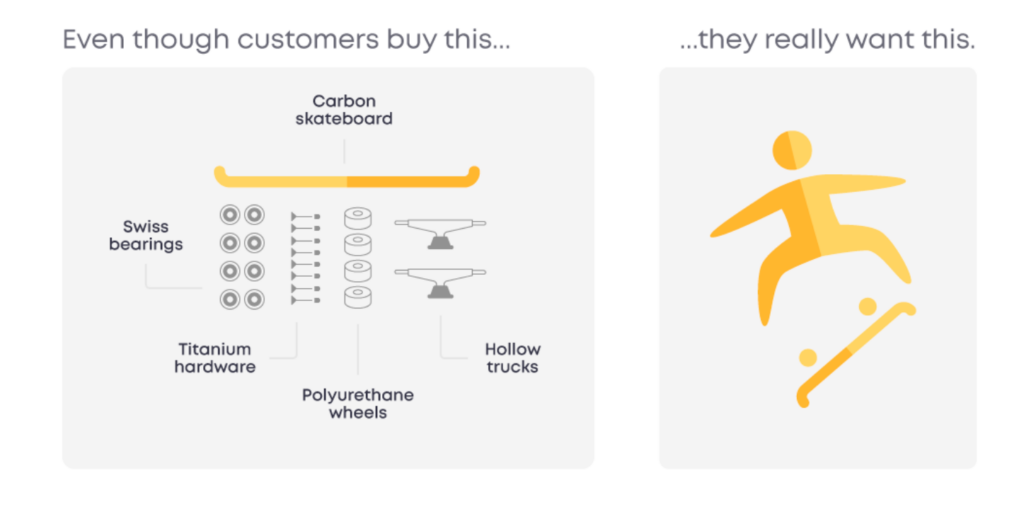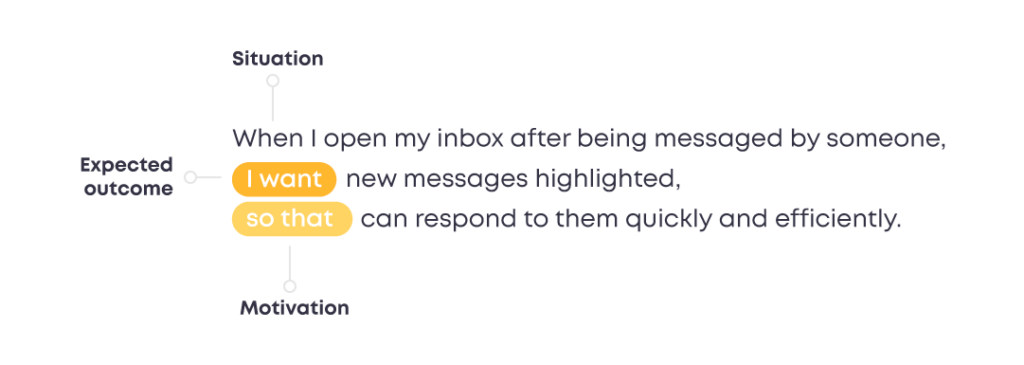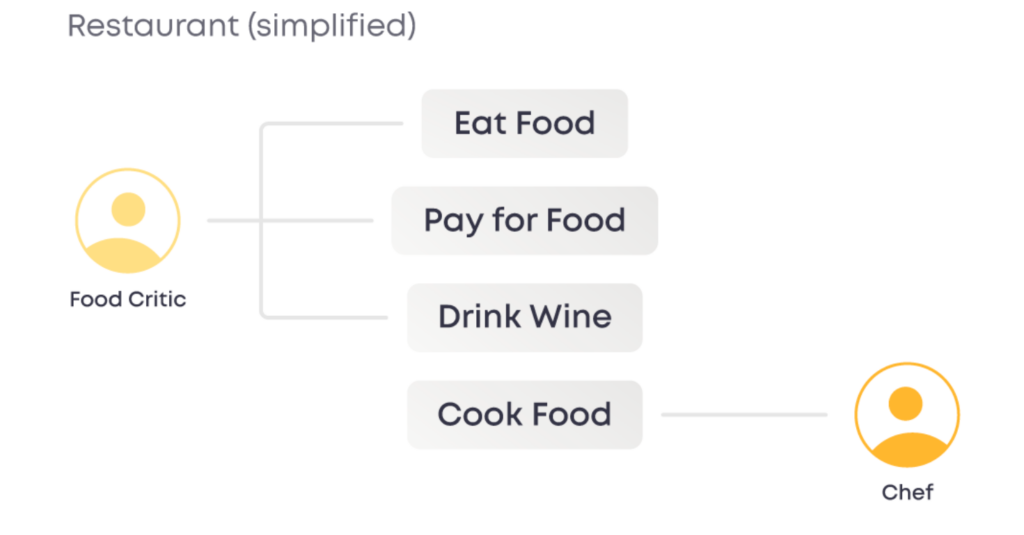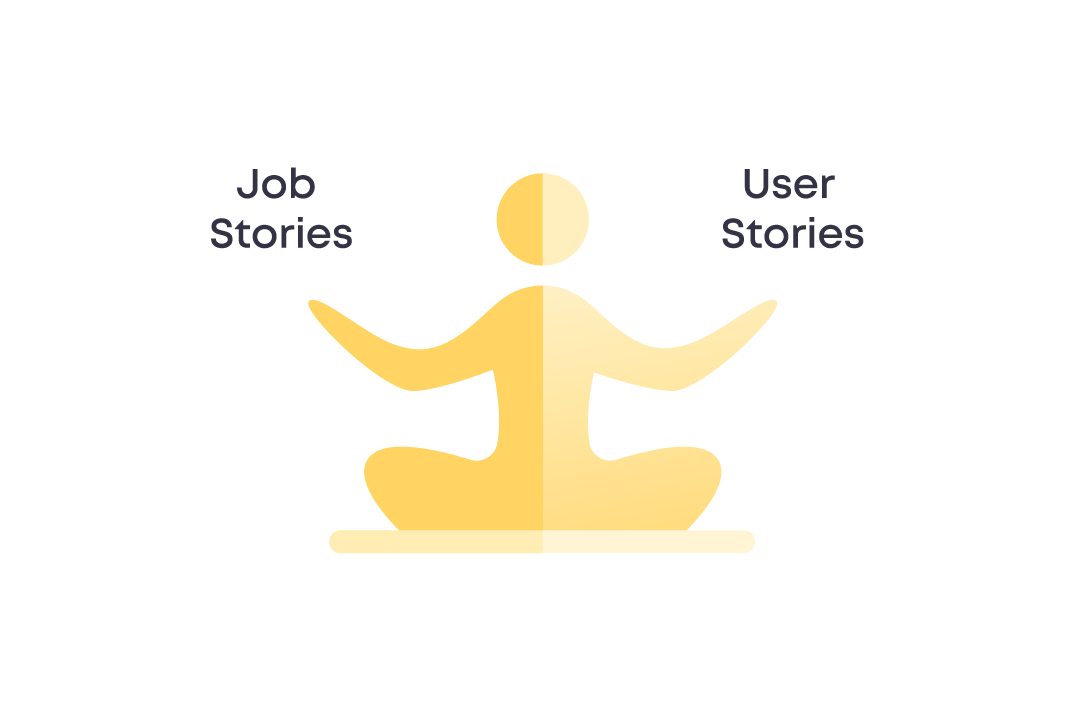The Jobs to be Done (JTBD) Approach and User Stories are two prominent tools in the field of UX/UI design, each offering unique perspectives and methods for understanding user needs and shaping product development by contributing insights and structure to it. While they share a common goal of enhancing user experiences, they are conceptually distinct, with their strengths and weaknesses in different contexts.
The fundamental differences of the approaches become evident upon closer examination. The Jobs to be Done approach delves into the underlying motivations and goals that drive users to interact with a product or service. It seeks to uncover the “jobs” or tasks users are trying to accomplish and the circumstances surrounding these tasks. In contrast, User Stories are primarily concerned with defining specific features, functionalities, or tasks within a product, with users at the center of their narratives.
The distinction between the two becomes even clearer when we explore the practical applications of these methodologies. Job Stories are typically employed when designers and product developers aim to understand the core objectives and motivations of users with minimal effort under varying circumstances. In essence, they focus on the motivation behind user actions and seek to create solutions that fulfill their objectives effectively.
On the other hand, User Stories revolve around the users themselves, placing their experiences, needs, and expectations at the forefront. They demand extensive user research to be conducted beforehand but are particularly useful in Agile development, where they serve as a means to define and prioritize specific tasks or features, ensuring that the end product aligns with the user’s perspective.
In the pages that follow, we will delve deeper into the intricacies of these two approaches, examining their advantages and disadvantages under diverse circumstances.
The Jobs to be Done Way

The Jobs to be Done (JTBD) framework is a user-centered approach in product design and innovation. It focuses on understanding the underlying motivations that lead people to “hire” products or services to accomplish specific tasks in their lives. By uncovering these fundamental jobs, JTBD helps designers create products that meet user needs in a meaningful way and drive innovation.
In practice, this means distinguishing core user motivation and reasons why they use the product, then arriving at how this motivation turns into a concrete task or a job. This is an effective way to find unique and innovative solutions that would create additional benefits for users or alleviate unnecessary friction.
The core benefit of JTBD is also hidden in their nature – they rely more on the context than on the user’s persona. If a situation calls for a solution that would fit all, then JTBD is a way to find that solution.
Lower is a typical structure of a Job Story in the JTBD framework:

What about User Stories then?

User Stories are a fundamental tool in the world of user-centered design and Agile development. They provide a concise and user-focused way to articulate the functionality or features of a product or service. These stories encapsulate the “who,” “what,” and “why” of a particular aspect of a project, offering a clear and tangible way for development teams to understand and address user needs.
To make User Stories more productive and relevant, extensive user research is essential. This process involves gathering insights into user behaviors, preferences, and pain points. Like Jobs to be Done, It aims to uncover the motivations and goals that drive users to interact with a product or service. User research is the foundation upon which User Stories are built, ensuring that they accurately represent user needs and expectations.
Lower is a typical structure of a User Story:

The Approaches Juxtaposed
Jobs to be Done (JTBD)
Pros
- Relies more on context than user personas: JTBD primarily focuses on understanding the contextual factors and motivations behind users’ actions. It’s not heavily reliant on creating detailed user personas, making it more adaptable in scenarios where detailed personas might not be available or necessary.
- Promotes unique and innovative solutions: The JTBD framework encourages thinking beyond incremental improvements. By understanding the core motivations of users, it empowers designers to come up with creative and innovative solutions that address these motivations effectively.
- Encapsulates user motivations in detail: JTBD allows for in-depth exploration of user motivations, enabling a deep understanding of what drives users to seek solutions. This detailed insight allows designers and product teams to focus on creating products that genuinely fulfill user needs, increasing the likelihood of product success.
Cons
- Lengthy and high-level: JTBD can be relatively lengthy and high-level in nature. While it provides a rich understanding of user motivations, the jobs identified are often abstract, which can make it challenging to directly derive actionable tasks or features from JTBD.
- Moderate expertise required: To effectively use JTBD, some level of expertise in the field and user research is necessary. Distinguishing between different user motivations and extracting relevant insights can be complex, especially for those who are less experienced in the domain.
User Stories
Pros
- Concise and actionable: User Stories are succinct and structured, making them highly actionable and manageable, especially in Agile development. Their brevity allows development teams to efficiently prioritize and complete tasks, streamlining project management.
- Easily digestible: User Stories are easy to understand and communicate, which is essential for cross-functional teams. Their simplicity and clarity ensure that everyone involved in the project can quickly grasp the user’s perspective and needs.
- Tailor experiences based on extensive user research: User Stories are grounded in user research and insights. They strive to create tailored experiences for users by incorporating the results of user research and ensuring that features and functionality align with user expectations and preferences.
Cons
- Dependence on extensive user research and personas: User Stories rely heavily on comprehensive user research and the creation of detailed User Personas. This prerequisite can be time-consuming and resource-intensive, making it less suitable for projects with limited research capabilities or tight schedules.
- Potential information gaps: User Stories are intentionally concise, focusing on the “who,” “what,” and “why.” However, they often leave out detailed information about the “how” and “when.” This brevity can lead to misunderstandings or gaps if team members need more context to execute tasks effectively.
Summary
In summary, while JTBD offers a deep understanding of user motivations and the potential for innovative solutions, User Stories are highly practical for Agile project management, being concise, easily digestible, and rooted in user research.
While Jobs to be Done can be lengthy and require a certain level of expertise to extract actionable tasks, User Stories depend on extensive research and personas, which can be resource-intensive. User Stories’ brevity may also lead to information gaps that need to be addressed during the development process.
The choice between these methods often depends on the specific project requirements, the available user insights, and the development approach being used.




